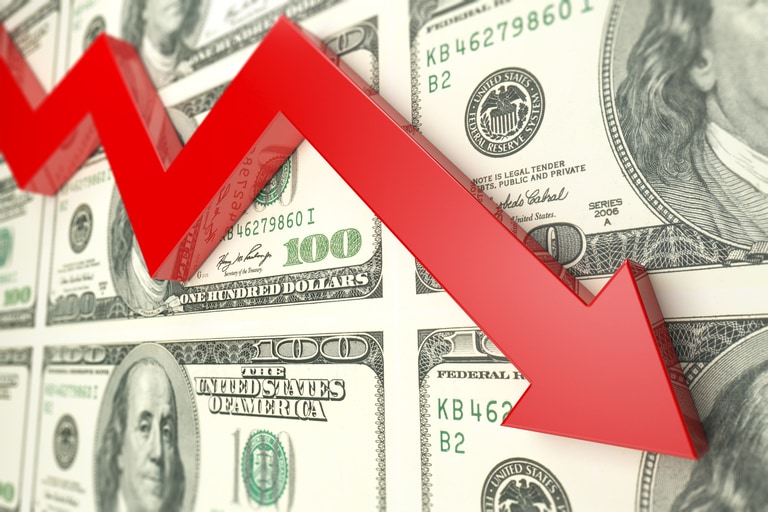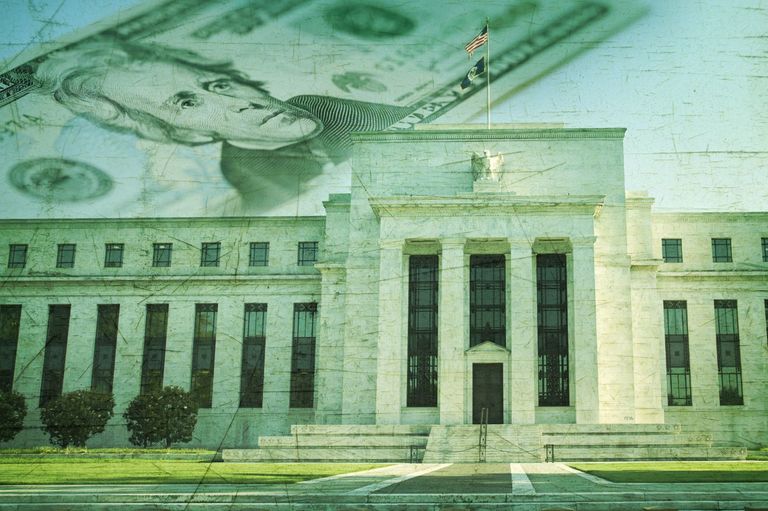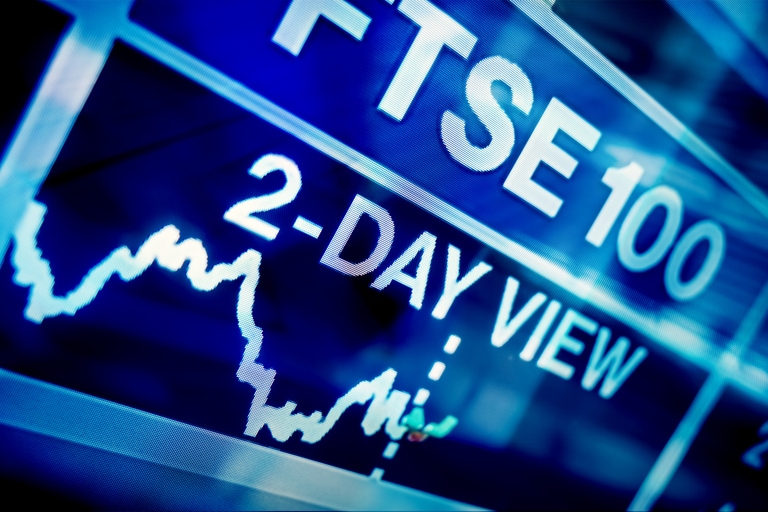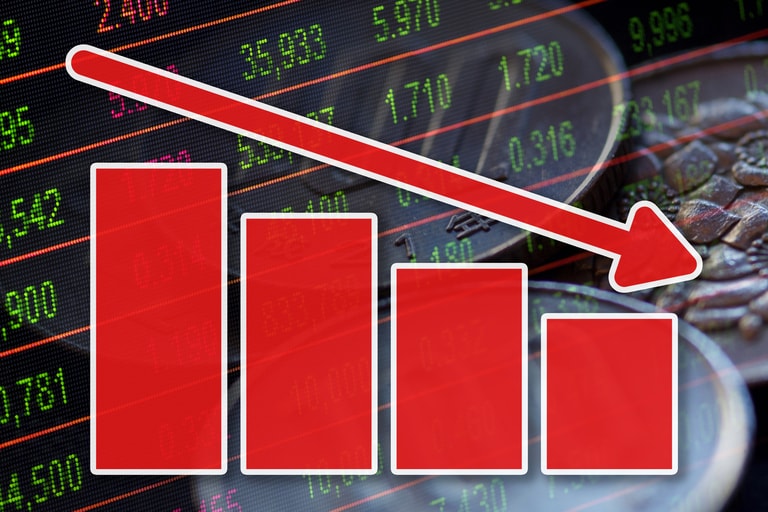Read our pick of the top stories to look out for this week (19-23 April), and view our key company earnings schedule.
In this week's video, Michael looks back at the week’s price action and the surprise fall in bond yields after bumper economic announcements from the US. He also looks ahead to the upcoming ECB rate meeting, UK unemployment, public finances and retail sales, plus results announcements from Taylor Wimpey, Associated British Foods, Johnson & Johnson and Netflix.
Coca-Cola Q1 results
Monday: Last year Coca-Cola generated $33bn in revenue, its lowest annual figure since 2009, as the pandemic acted as a drag on its global business. In the final quarter of last year, the company did manage to beat expectations, however investors were less than impressed, with the share price only marginally up and well below the highs of last year. The company is in the process of cutting jobs, as well as slimming down its drinks portfolio to cut costs as well as focus on more mainstream brands like Coca-Cola, Coke Zero and Dasani, plus fruit juice, tea and coffee.
The timing of its acquisition of Costa Coffee from Whitbread proved to be rather unfortunate, with lockdown restrictions in the UK curtailing its turnover in this quarter as well as last year. In February, management said that global volume had declined by mid-single digits, a trend that is likely to have continued into March. With the scaling back of lockdown restrictions coming through in the upcoming quarter, the outlook is likely to be much brighter. Coca-Cola warned in February that this quarter’s results would face a currency headwind of 2%, with profit expected to come in at $0.50 a share.
United Airlines Q1 results
Monday: United Airlines has taken a battering as air travel halted over the last 12 months. Along with other US airlines, United had to be bailed out by the US government to the tune of $7.7bn in grants for payroll support. The airline also took a loan of $520m, and last week took steps to repay that money with a $5.5bn fundraising programme of five-year and eight-year notes, secured against its routes, slots and gates. It's also looking to borrow $3.5bn in secured loans in the hope of shoring up its cash reserves in what is likely to be a choppy and uneven return to normal. At the same time, United gave an insight into this week’s numbers, with an expectation that revenue will be 66% down from the same quarter in 2019. The airline expects revenue of $3.2bn, with demand accelerating in March, as the vaccination programme led to a big rise in new bookings. Losses are still expected to be huge at $6.78 a share, with the average daily cash outflow for Q1 expected to be in the region of $9m a day.
UK ILO unemployment (February) & claimant count (March)
Tuesday: The ILO measure of unemployment fell modestly in January to 5%, slipping back from 5 1% in December. While this is encouraging, it's also important to acknowledge that this is a lagging indicator and not indicative of the real unemployment measure. Nonetheless, the Bank of England does appear more optimistic about the outlook for unemployment this year, revising its forecasts lower once the government starts to withdraw the furlough support that has been in place over the last 12 months. Monthly jobless claims for March was slightly more concerning, showing a big rise in February, rising from 7.2% to 7.5%, the highest level since August last year. With the UK economy slowly starting its reopening process this month, the hope is that this claims number will exhibit a similar fall this time around, as businesses restart and take back furloughed employees, and start to drift back down towards 7% again.
The rise in the claims number was undoubtedly due to the reimposition of lockdown in January, however there was some evidence of a pickup in hiring in some other areas of the economy. That still can’t disguise the reality that there are 700,000 fewer jobs in the UK economy since this time last year, with most of those job losses in the hospitality sector and under the age of 25. In retail the picture is equally as bleak, as according to the British Retail Consortium 67,000 jobs have been lost between December 2019 and December 2020. The outlook does appear to be starting to look a little brighter if the latest economic projections from the Office for Budget Responsibility (OBR) are any guide. The OBR upgraded economic projections for unemployment down from a peak of 7.5% to 6.5% earlier this month, as the chancellor set out his various measures to extend furlough, as well as reductions to key tax and business rates. This raises prospect that companies that are struggling will delay cutting staff until the reopening path is clearer, while companies that are growing will recruit more quickly to take advantage of new investment opportunities.
Associated British Foods half-year results
Tuesday: While ABF’s Primark stores have been closed for most of the last 12 months, its other businesses have performed better than expected. In February, the company said that revenues in its other businesses of grocery, sugar and agriculture were all ahead of expectations. Clothes retail is another matter; with all of its Primark stores currently closed and no online operation, the loss of sales was expected to be in the region of £1.1bn. Sales for the first half of the year are expected to come in at £2.2bn, compared to £3.7bn the year before, however management were hopeful that some of this can be caught up when stores reopen, with the queues outside its Oxford Street store last week an encouraging sign.
Johnson & Johnson Q1 results
Tuesday: Another US pharmaceutical giant working on a coronavirus vaccine, Johnson & Johnson's Janssen shot takes the form of a single jab, which is likely to be popular with those who are vaccine-hesitant and not keen on two injections close together. In Q4, Johnson & Johnson's revenue and profit came in well ahead of expectations, with its pharmaceutical business generating a 16% increase in revenue year-on-year. While the vaccine is still waiting approval, it's similar in nature to the AstraZeneca jab in that it's an adenovirus, as opposed to an mRNA jab. Johnson & Johnson's share price has come under pressure in recent days, after the US FDA suspended the vaccine over blood clot concerns, the same concerns that have bedevilled AstraZeneca. This could dent future revenue expectations, with the EU said to be considering ending its vaccine contract when it expires. The company was optimistic about its new fiscal year, forecasting that revenue would rise from $82.5bn to over $90.5bn with profit of $9.50 a share. Q1 profit is expected to come in at $2.33 a share.
Netflix Q1 results
Tuesday: At the end of last year, Netflix managed to show that it was fending off the challenges from the likes of Disney+, Apple TV+ and Amazon Prime, reporting 8.51m new subscribers and posting revenue of $6.64bn in its final Q4 numbers. It also projected that subscriber numbers in Q1 2021 would rise by 6m, with profits expected to come in at $2.97 a share. Despite the challenges being posed across the streaming sector Netflix has still been able to increase its prices, with the big question being whether its premium price will lead to a slowdown in subscriber growth in 2021.
There are now 203.7m Netflix subscribers, with the company targeting an operating margin of 20%, as well as being cashflow positive by the end of 2021. These goals seem highly ambitious, as does the promise to look at considering share buybacks, given the strong performance last year, as its strategy of spending billions of US dollars on new content continues to pay dividends. Downside risks for Q2 are likely to be a slowdown in subscriber growth as economies come out of their winter lockdowns and start to embrace the great outdoors. This could prompt Netflix management to be more circumspect about its growth numbers in Q2 and Q3. It seems unlikely that Netflix will be able to repeat the type of subscriber growth of last year, even if it does carry more foreign language content than its peers.
Taylor Wimpey Q1 results
Thursday: Housebuilders’ share prices were hit hard in the wake of the initial lockdown of the UK economy over a year ago. Since then the shares have slowly recovered, but are still below their pre-pandemic lows. The sector has managed to shake off the worst of the past 12 months, as was shown in Taylor Wimpey’s full-year numbers in March, however costs have increased significantly in order to safeguard its workforce. Supply chain costs have also increased, which has seen operating margins decline from 19.6% to 10.8%. There was also a 35% decline in full-year revenue to £2.79bn, sending profits down to £217m, a 68% drop. The fall in completions, to 9,799, was largely as a result of the first lockdown which delayed the sales process.
The company also set aside £125m worth of funding to support fire safety improvement works for leaseholders in high-rise buildings, to ensure they meet regulations. On the plus side, management took the decision to pay a final dividend of £4.14 per share. With the stamp duty holiday extended further, demand has continued to look solid, while average selling prices have increased to £288,000 from £269,000. In March, the company said that the order book was just shy of £2.8bn, comprising just over 11,000 homes, with over 50% sold. Expectations are for 2021 volumes to come at around 85% to 90% compared with 2019, with a view to getting operating margins back up to 21% to 22% in the next two or three years. This year’s target is for a return to between 18.5% and 19%, which seems a big ask given margins are currently at just 10.8%.
ECB rate decision
Thursday: The European Central Bank has gone to great lengths to support the European economy over the last 12 months. The continued delay in rolling out the pandemic recovery fund continues to be particularly serious for the likes of Italy, Spain and Greece, who are at risk of losing another summer tourist season. In recent weeks, the fall in the euro has offered the ECB a brief respite after the single currency briefly pushed above the 1.2000 level in the first part of this year. The ECB’s biggest problem now is keeping yields low in the face of the sharp rise in longer-term US yields, which are having a ‘rising tide lifts all boats’ effect on European longer-term borrowing costs.
There are now signs that EU nations are starting to get on top of their own vaccination programmes, however they remain well behind the US and UK when it comes to loosening restrictions domestically. To offset the weakness in the services sector, which is continuing to struggle with various lockdown restrictions, the central bank expanded its pandemic emergency asset purchase programme from €1.35trn to €1.85trn in December, and extended it a further nine months until March 2022. While this helps buy time, along with the new loan programmes in the form of TLTROs, the ECB can’t act alone given it's already operating at the limits of its mandate. It needs help on a much bigger fiscal scale, in the form of the EU recovery fund, which is being held up by the German courts. Even so, only €390bn of the €750bn of that fund is available in the form of grants, which is probably too low to really make much of a difference.
Intel Q1 results
Thursday: Chip makers have generally been good at generating profits with demand for gadgets driving the profits of Apple, Samsung and other PC makers. Last year Intel turned over a record $77.9bn, the fifth record year in a row, with Q4 its strongest quarter. While revenues have increased year-on-year, income has lagged behind, falling by 1% for the second year in a row, as gross margins slipped to 56.8%, a decline of 2.5%. While some of the erosion of margins has been down to disruptions caused by the pandemic, and even though Intel's share price has retested the recent record highs near $69, the company is likely to face further headwinds in the weeks and months ahead. Management acknowledged this challenge back in January, when they warned that Q1 revenues were expected to come in 12% lower than the same time last year, though this was still higher than many expected. Forecasts are for revenue of around $18.6bn and profit of $1.10 a share. This will also be the first quarter with new CEO Pat Gelsinger, who replaced Bob Swan in February.
UK public sector net borrowing (March)
Friday: Public finances deteriorated further in February, meaning that the UK government has had to borrow money in every single month of a fiscal year. Another £19.1bn was added to the national debt, and while there is a great deal of apprehension in terms of the amounts the UK government is borrowing, it’s not immediately clear what else the government is supposed to do.
Tax receipts in February were also lower, again not surprising with so many businesses closed. In the current fiscal year to February, net borrowing rose to £278bn, with this week’s March number expected to see borrowing reach almost £300bn. This is still lower than was originally forecast, and has been helped by a number of businesses returning their furlough and business rates money as they successfully adapted their businesses to a more online model. There was also a much better-than-expected tax take in January prior to the end of year self-assessment deadline. All of that aside, the government is still set to borrow a record post-war amount, and while interest rates are still at record lows, the recent sharp rise in UK government gilt yields is likely to be a cause for concern, especially if they start to move above 1%.
It's no secret that chancellor of the exchequer Rishi Sunak would rather rein back on the extraordinary support measures sooner rather than later, however it remains highly likely that it will be quite some time before normal service is resumed, with the likes of hospitality unlikely to return to pre-pandemic levels of activity until next year at the earliest. This focus on public finances, and the growing levels of public debt, is certainly a concern and is a little bit of a distraction to the wider issues facing the UK economy.
UK retail sales (March)
Friday: The January lockdown unsurprisingly prompted a big slide in UK retail sales of -8.2% as consumers stayed at home, in the aftermath of a 0.3% rise in December. In February, this slump saw a modest reversal of 2.1% as people took advantage of garden and DIY centres still being open. A 16% rise in household goods helped offset a 50% decline in clothing sales, however anyone expecting a big jump in March may be disappointed, with consumers likely to wait for the April relaxation to reopen their wallets. Any upside to March is likely to be of a similar pattern to February, with garden centres seeing a pickup as gardeners prepare for the spring.
The picture now looks a little more positive, on the back of an impressive vaccine rollout which is helping to underpin consumer confidence, and which has seen UK GDP show a much shallower contraction in January and February than was originally feared. The biggest drag on retail sales will continue to come from the closing of non-essential retail as well as pubs, bars and restaurants, which are set for extremely subdued levels of activity if any at all, though as recent retail numbers have shown, the boom in online and digital sales is helping compensate in other areas. We also have the latest flash PMIs for manufacturing and services for April, which were really solid in March as companies restocked inventory and prepared themselves for the unlocking.
France & Germany flash PMIs (April)
Friday: It’s been clear for several months now that economic activity between the services and manufacturing sectors has been on a divergent path, due to lockdown restrictions that have crimped services activity. The various lockdown restrictions that have been in place since October in both France and Germany has meant that the services part of both of Europe’s largest economies has really struggled. In France, services has been in contraction for 10 months out of the last 13, as well as the last seven months in a row. In Germany it’s not been as bad, but the sector has still struggled, though it did return to expansion in March. This period of contraction for France is set to continue in April, though there may be improvements as both countries accelerate their vaccination programmes. Infection rates still need to come down before a broader loosening of restrictions takes place over the coming weeks.
Manufacturing has been a bright spot where purchasing manager indices (PMIs) are concerned, however the recent France industrial production data appears to call some of that belief into question. The resilience in manufacturing PMIs appears to have helped on the margins, with some solidly positive numbers on both sides, with Germany outperforming. However, with little prospect of restrictions being eased in the near term, expect to see further pain for services in April as we look towards Q2. Restaurants and bars in France are still closed, which makes an eighth consecutive month of contraction likely.
Index dividend schedule
Dividend payments from an index's constituent shares can affect your trading account. See this week's index dividend schedule.
Selected company announcements
| Monday 19 April | Results |
| Coca-Cola (US) | Q1 |
| Energean (UK) | Full-year |
| M&T Bank (US) | Q1 |
| Prologis (US) | Q1 |
| United Airlines (US) | Q1 |
| Tuesday 20 April | Results |
| Associated British Foods (UK) | Half-year |
| Card Factory (UK) | Full-year |
| Harley-Davidson (US) | Q1 |
| Johnson & Johnson (US) | Q1 |
| Manpower (US) | Q1 |
| Netflix (US) | Q1 |
| Philip Morris (US) | Q1 |
| Wednesday 21 April | Results |
| Banner (US) | Q1 |
| Carr's Group (UK) | Half-year |
| Chipotle Mexican Grill (US) | Q1 |
| Halliburton (US) | Q1 |
| Kier (UK) | Half-year |
| Nasdaq (US | Q1 |
| NETGEAR (US) | Q1 |
| Verizon (US) | Q1 |
| Thursday 22 April | Results |
| Dow Inc (US) | Q1 |
| Informa (UK) | Full-year |
| Intel (US) | Q1 |
| Mattel (US) | Q1 |
| Pentair (UK) | Q1 |
| Snap-on (US) | Q1 |
| Taylor Wimpey (UK) | Q1 |
| Union Pacific (US) | Q1 |
| VeriSign (US) | Q1 |
| WWE (US) | Q1 |
| Friday 23 April | Results |
| American Express (US) | Q1 |
| Honeywell (US) | Q1 |
| Kimberley-Clark (US) | Q1 |
Company announcements are subject to change. All the events listed above were correct at the time of writing.
Disclaimer: CMC Markets is an execution-only service provider. The material (whether or not it states any opinions) is for general information purposes only, and does not take into account your personal circumstances or objectives. Nothing in this material is (or should be considered to be) financial, investment or other advice on which reliance should be placed. No opinion given in the material constitutes a recommendation by CMC Markets or the author that any particular investment, security, transaction or investment strategy is suitable for any specific person. The material has not been prepared in accordance with legal requirements designed to promote the independence of investment research. Although we are not specifically prevented from dealing before providing this material, we do not seek to take advantage of the material prior to its dissemination.







